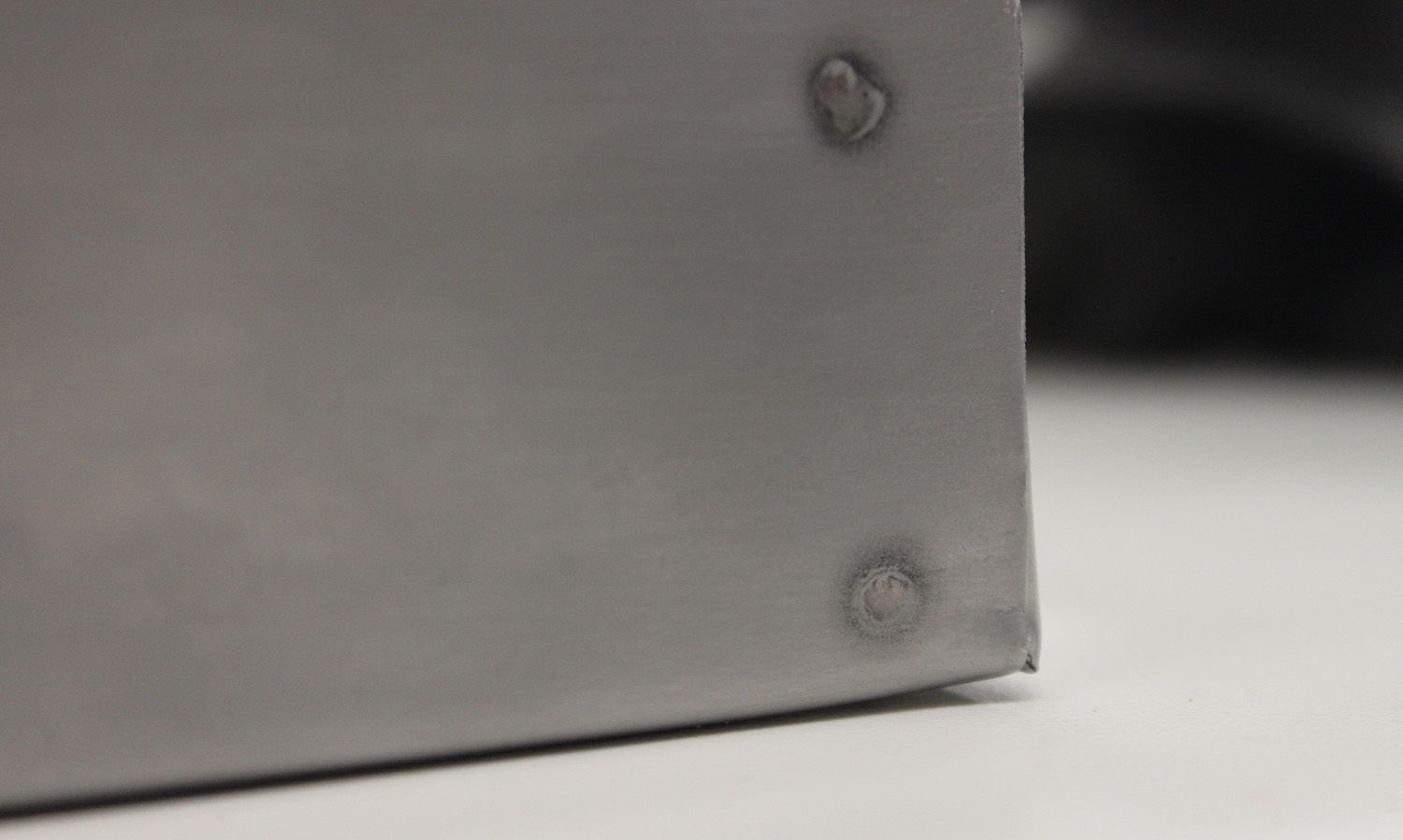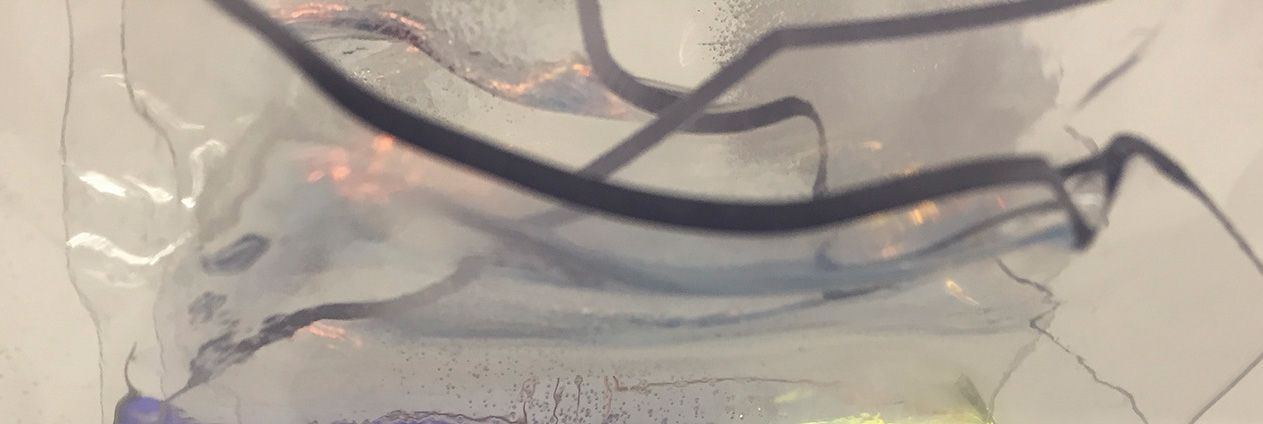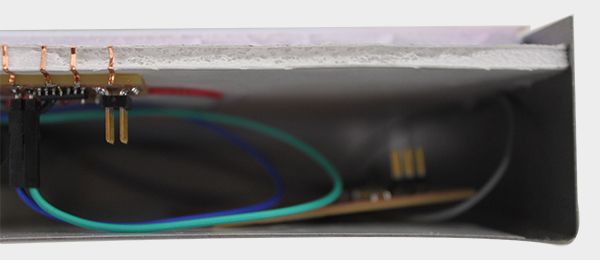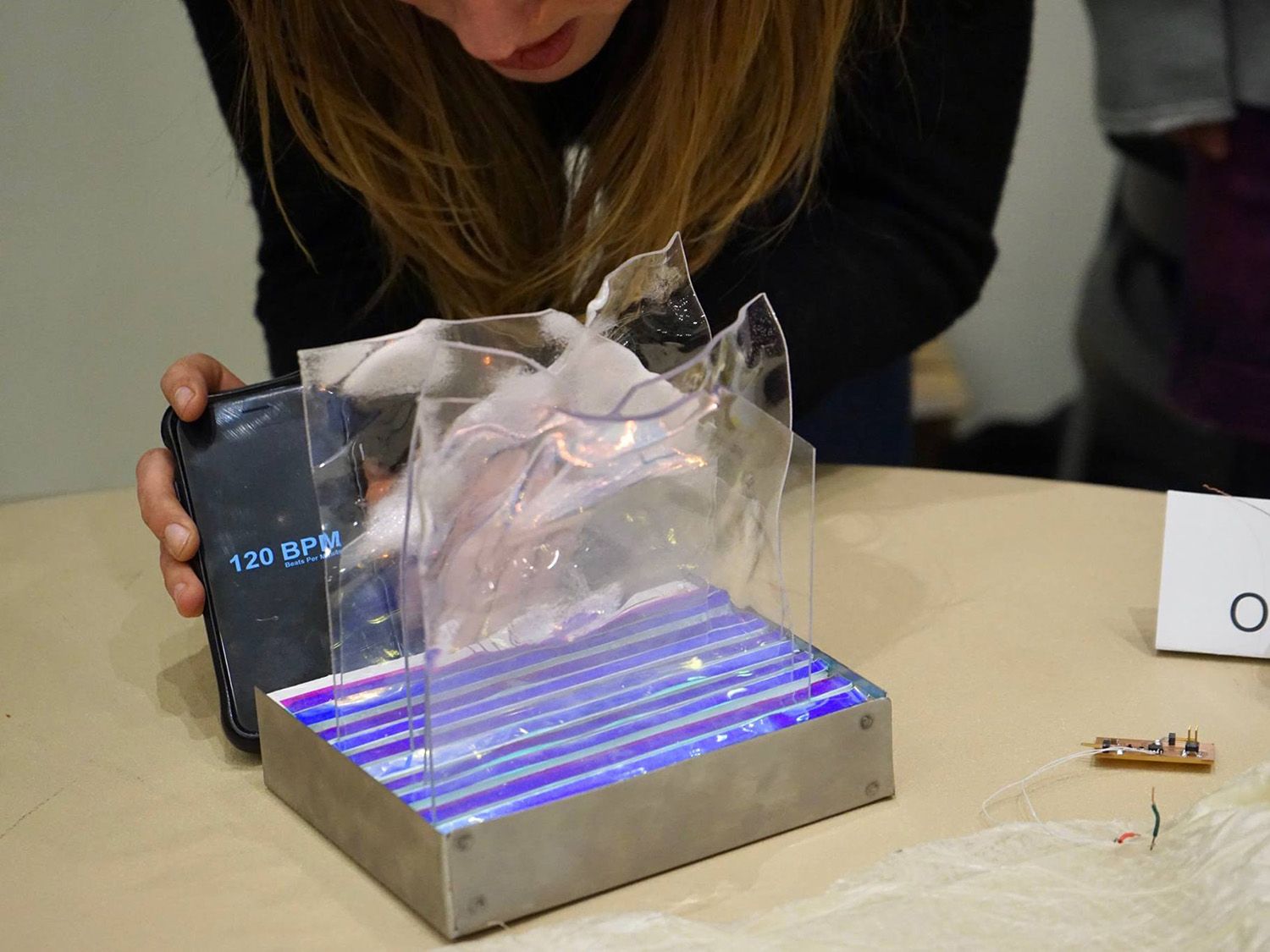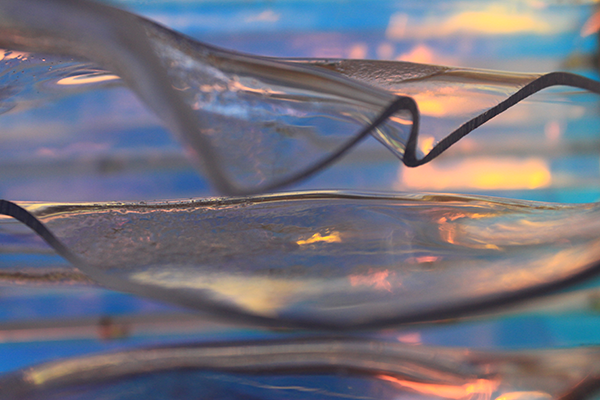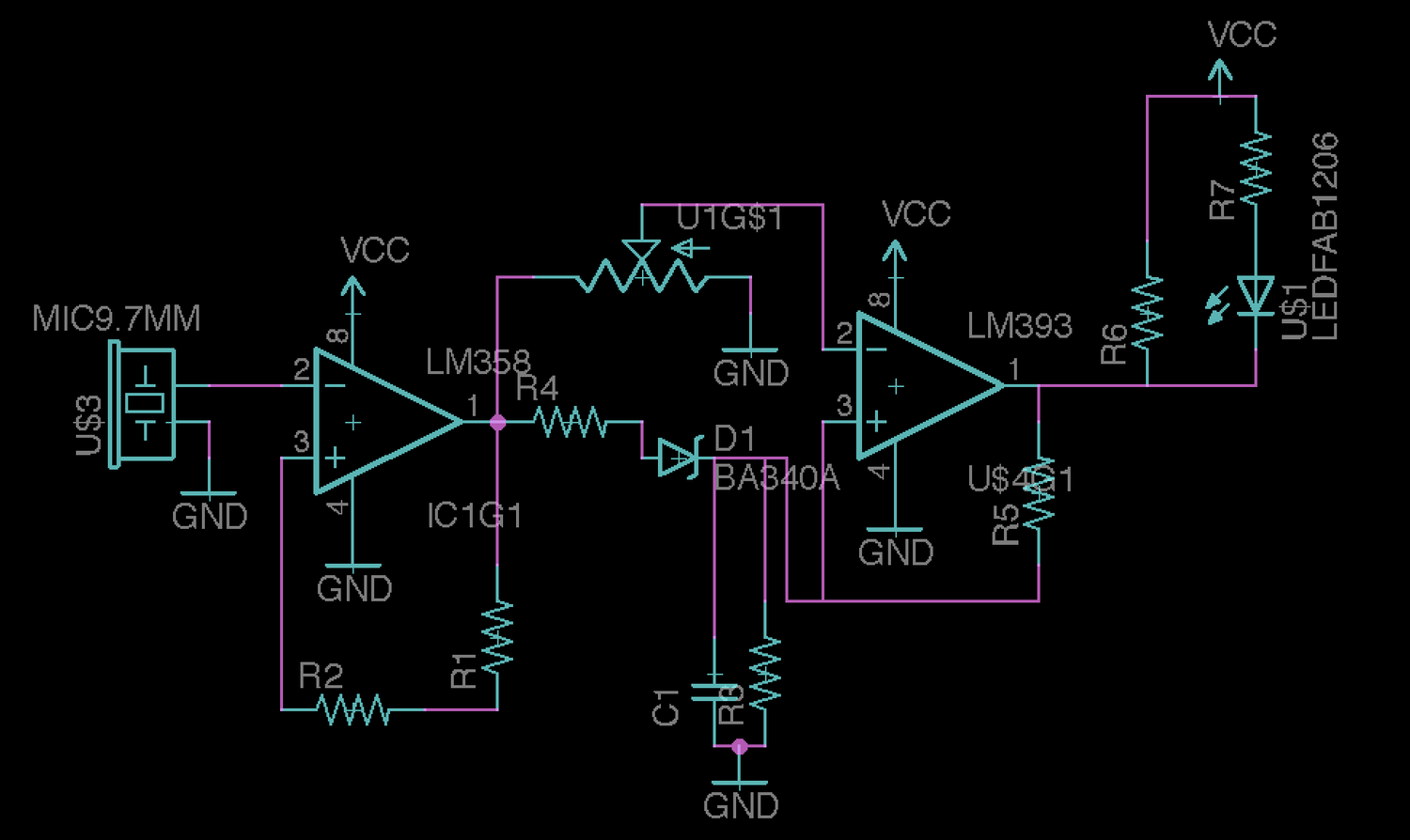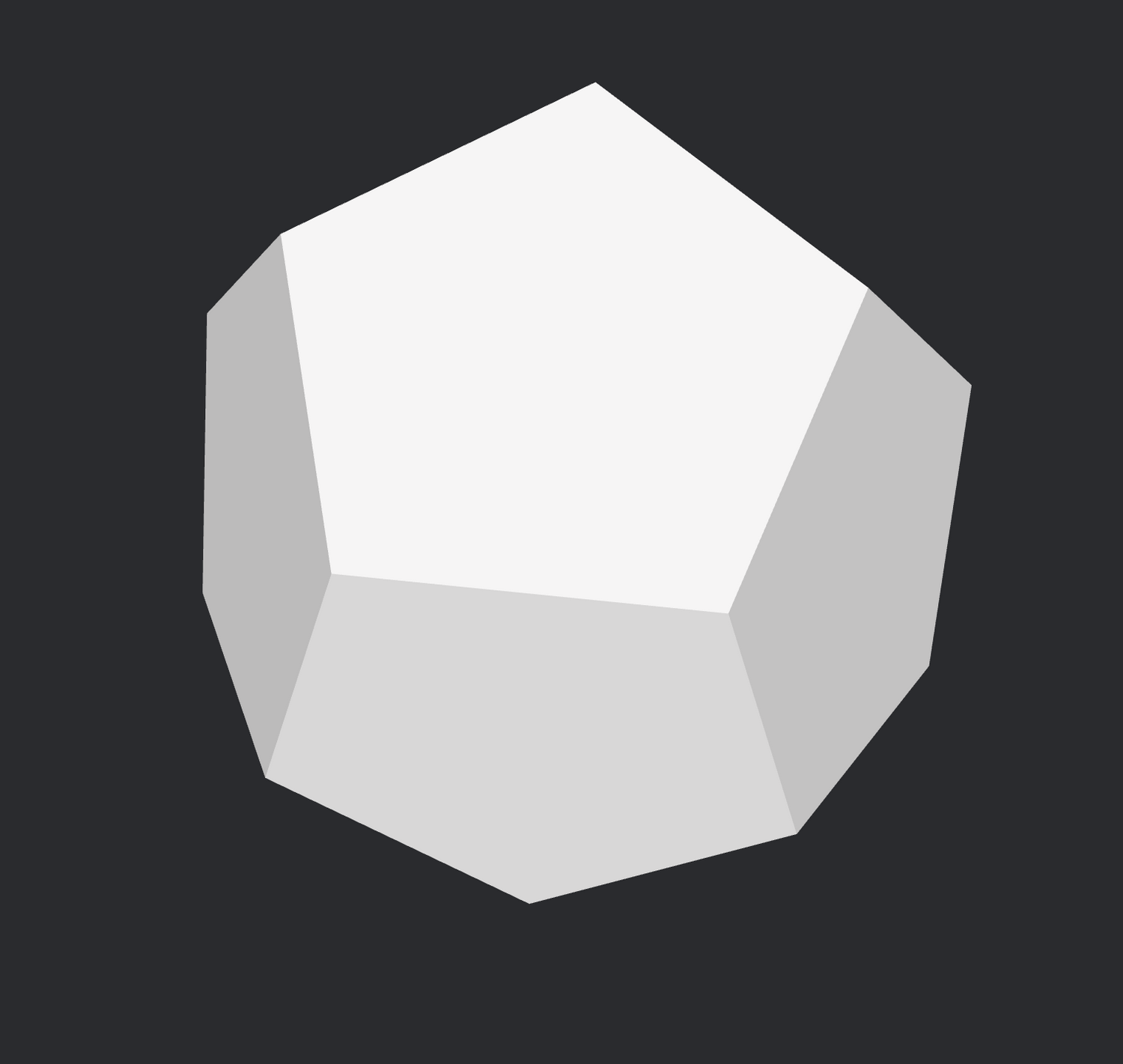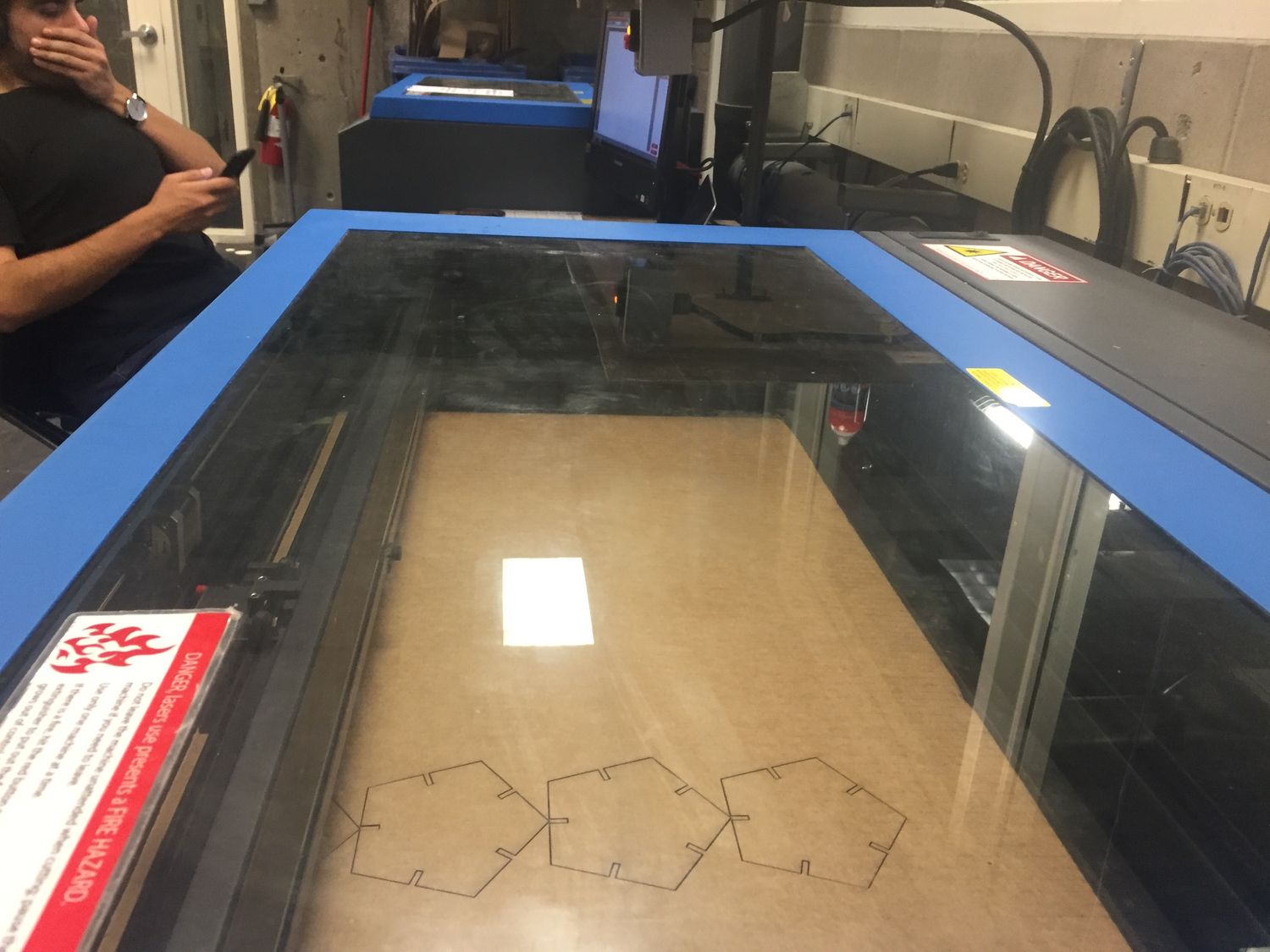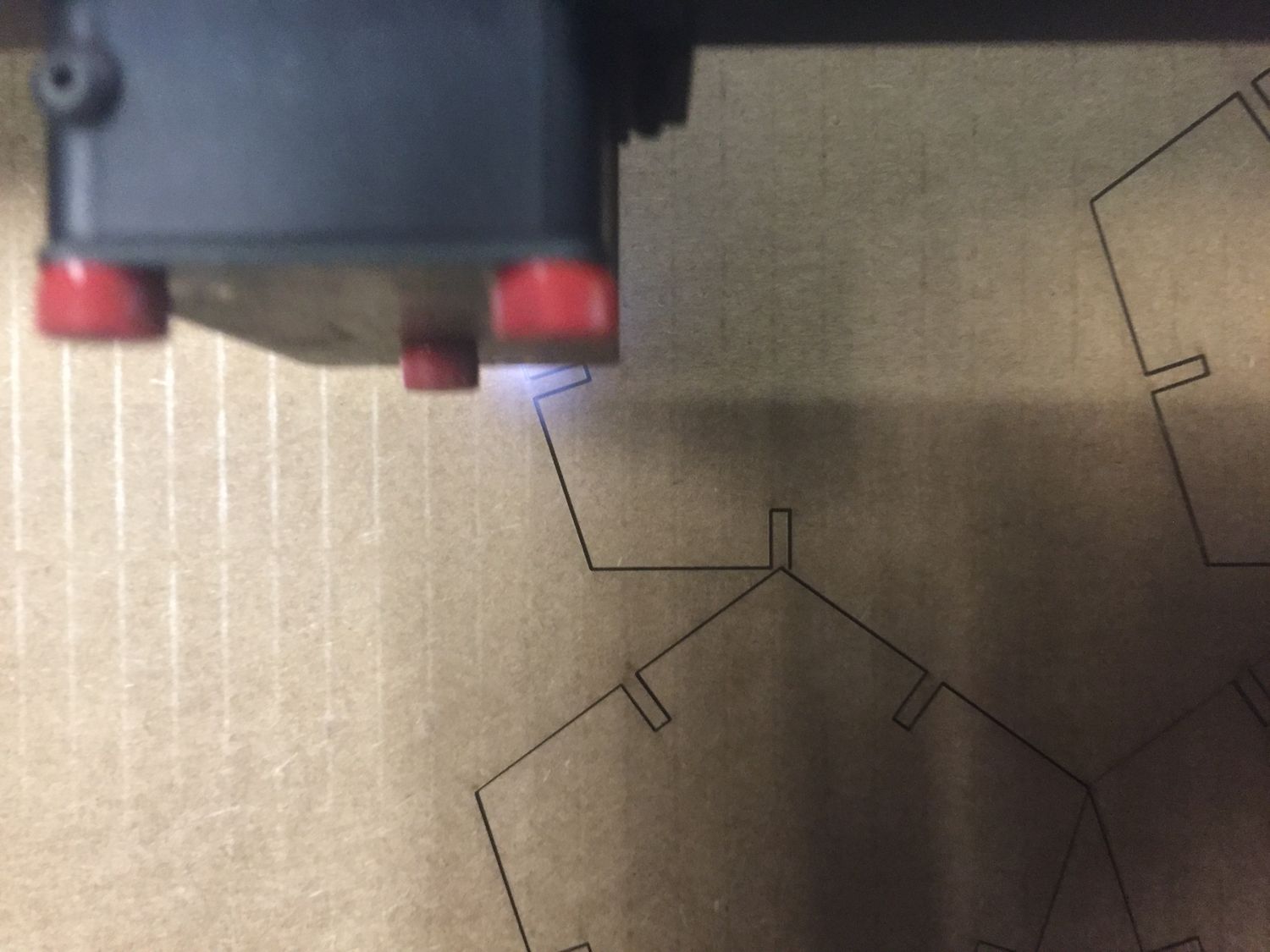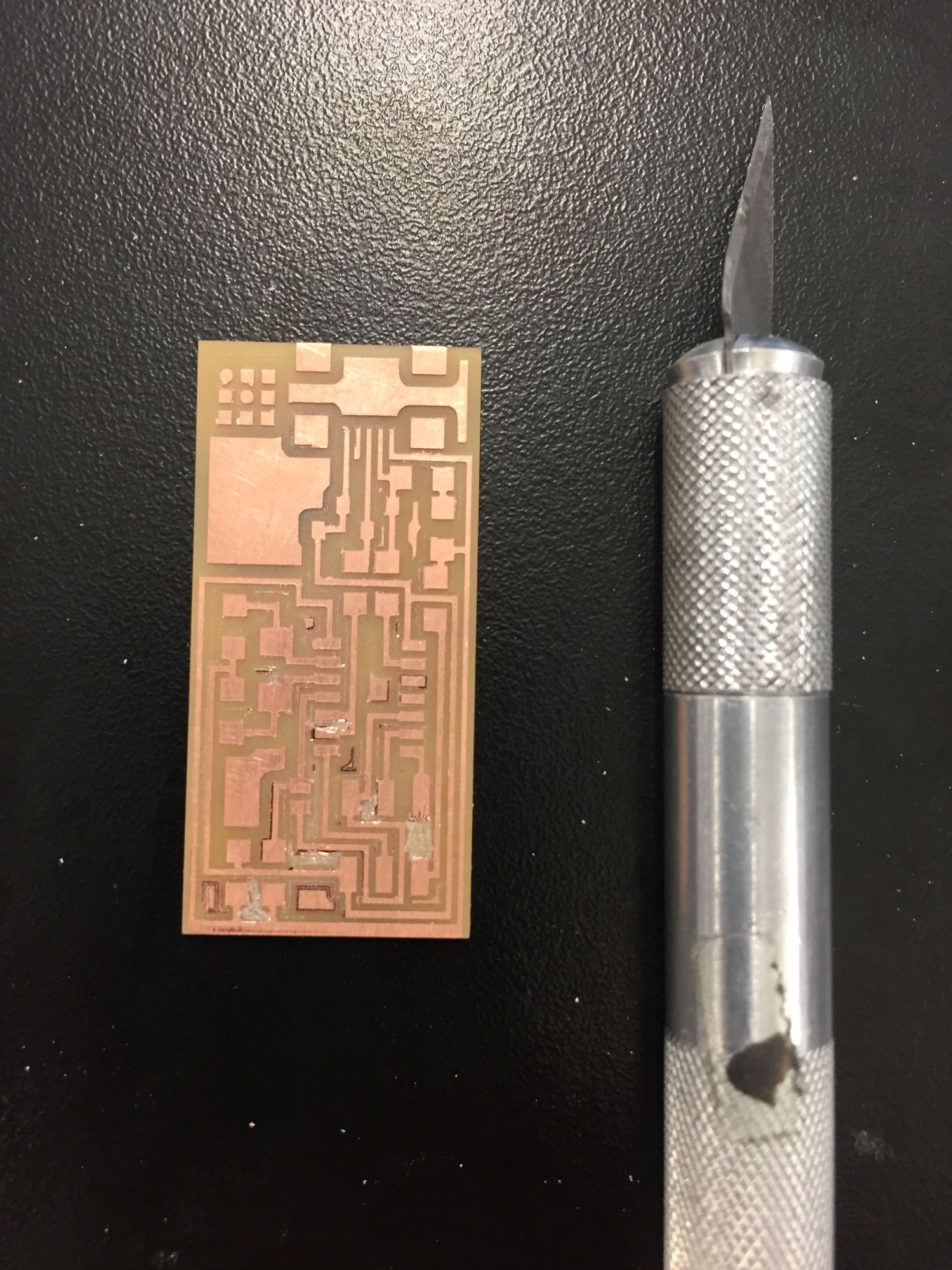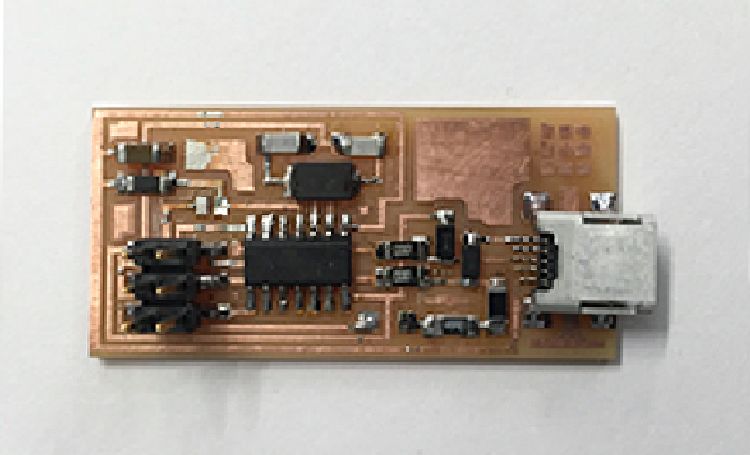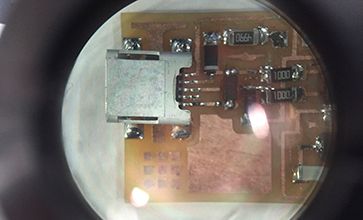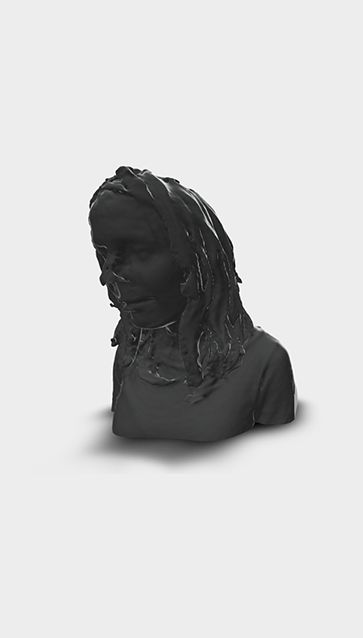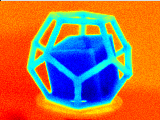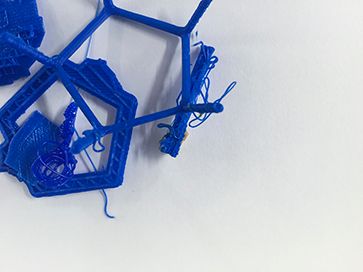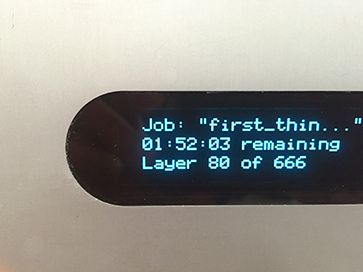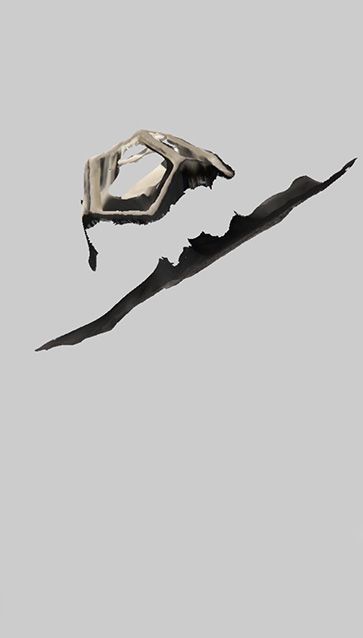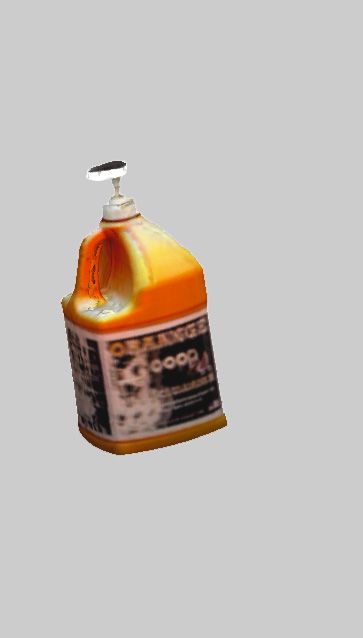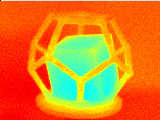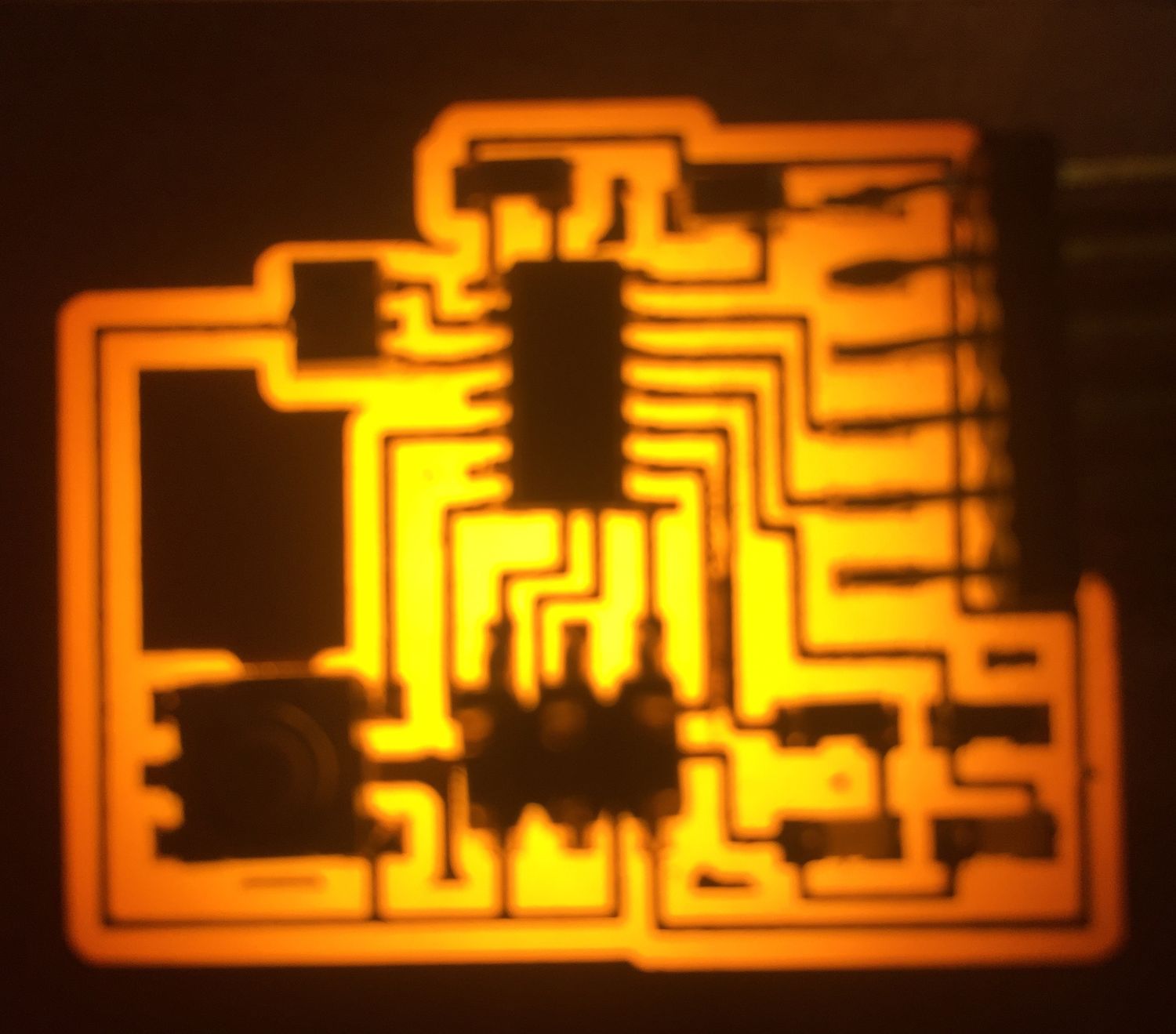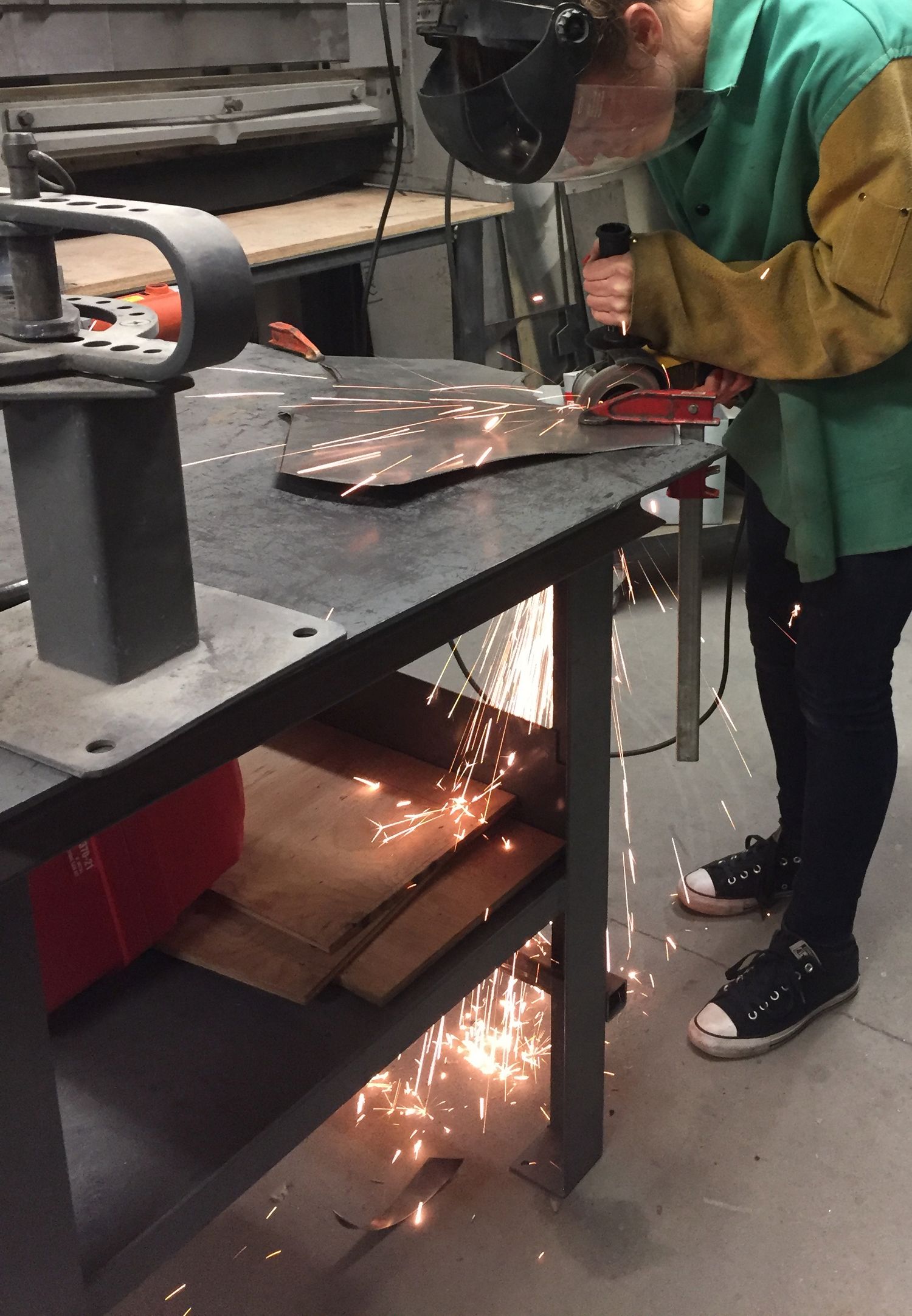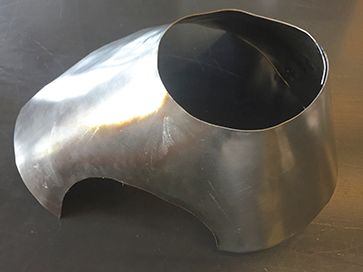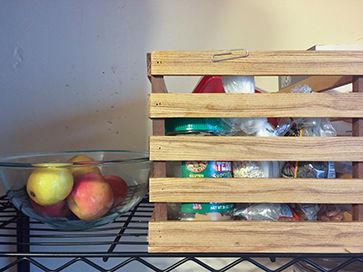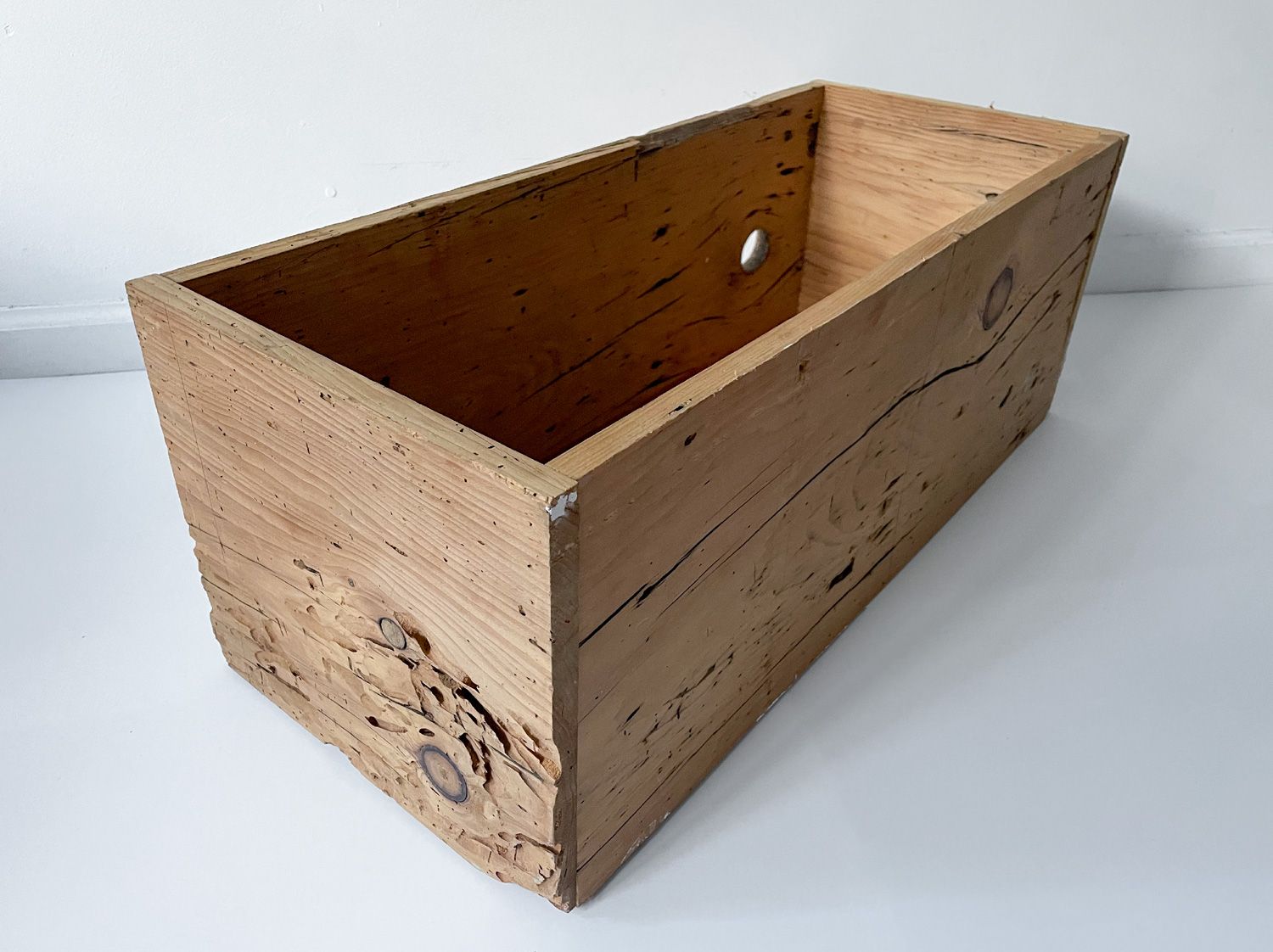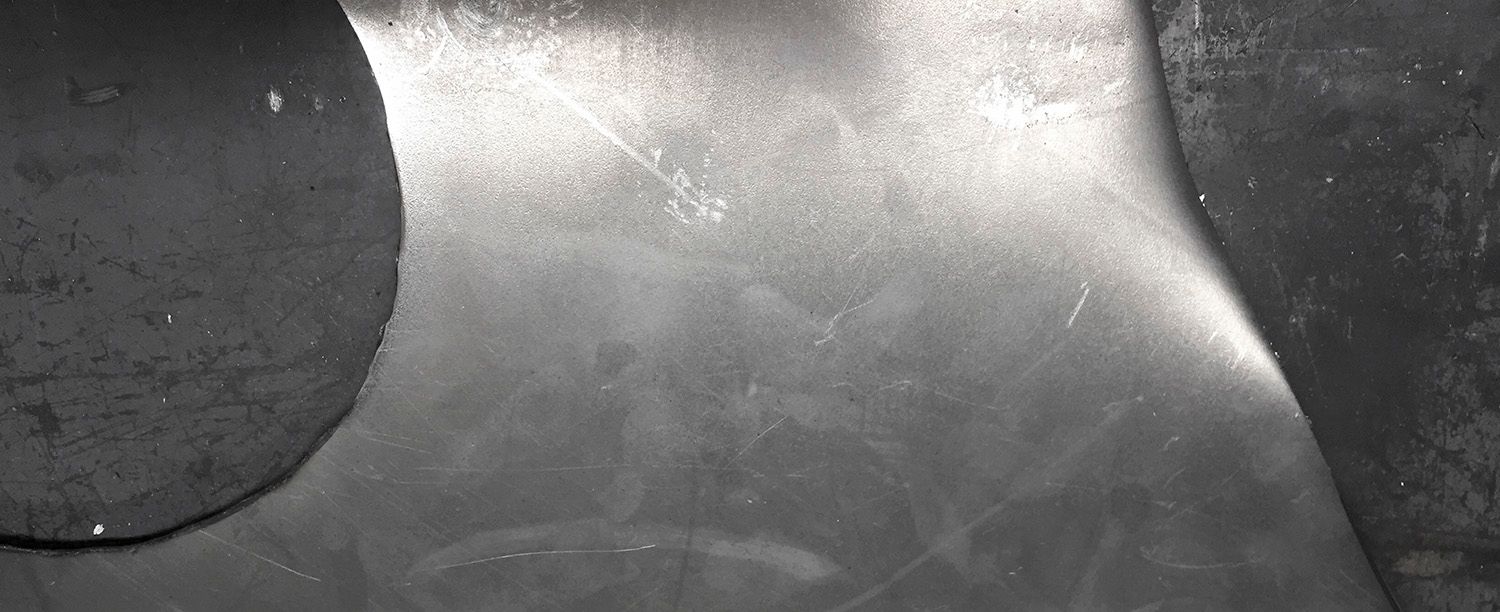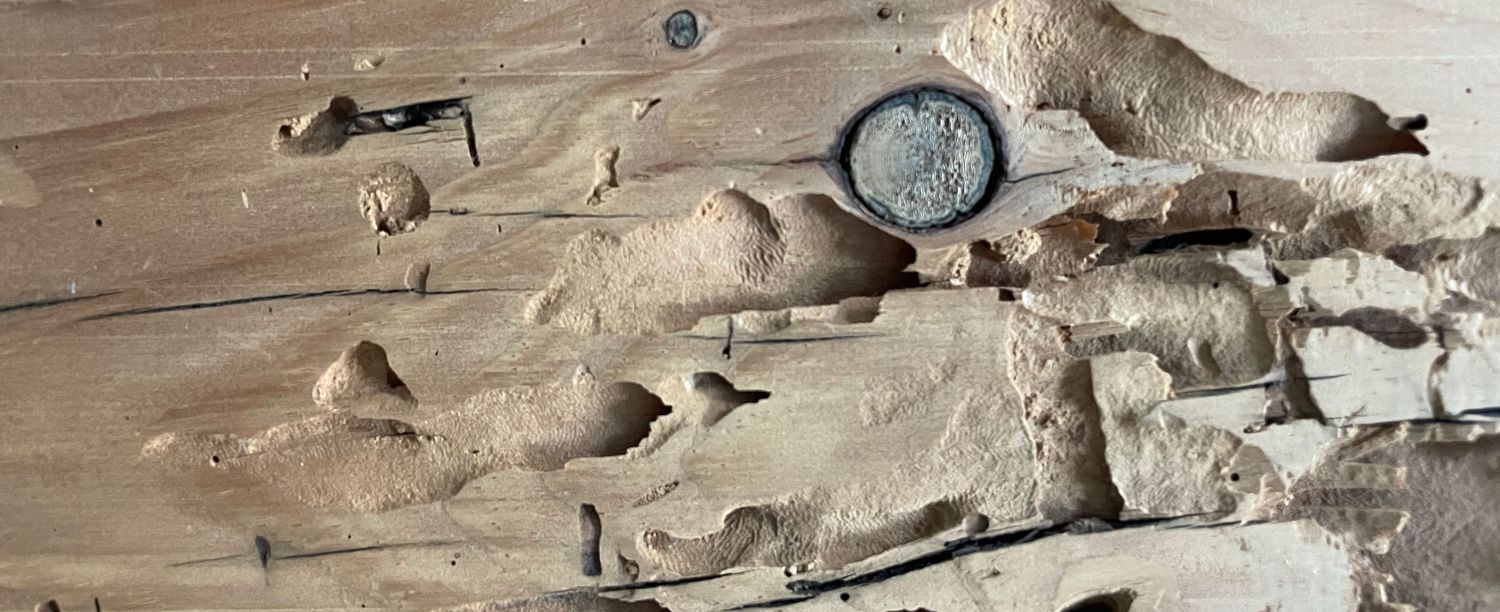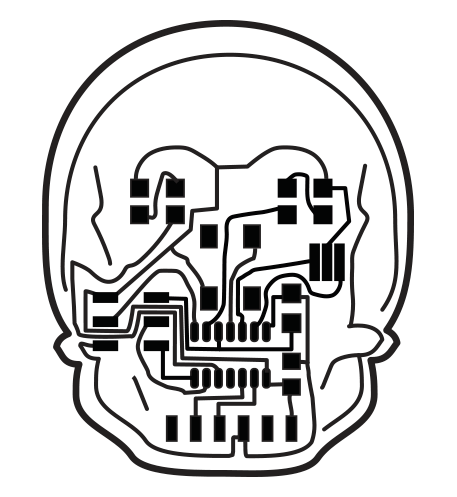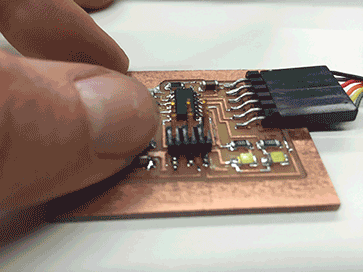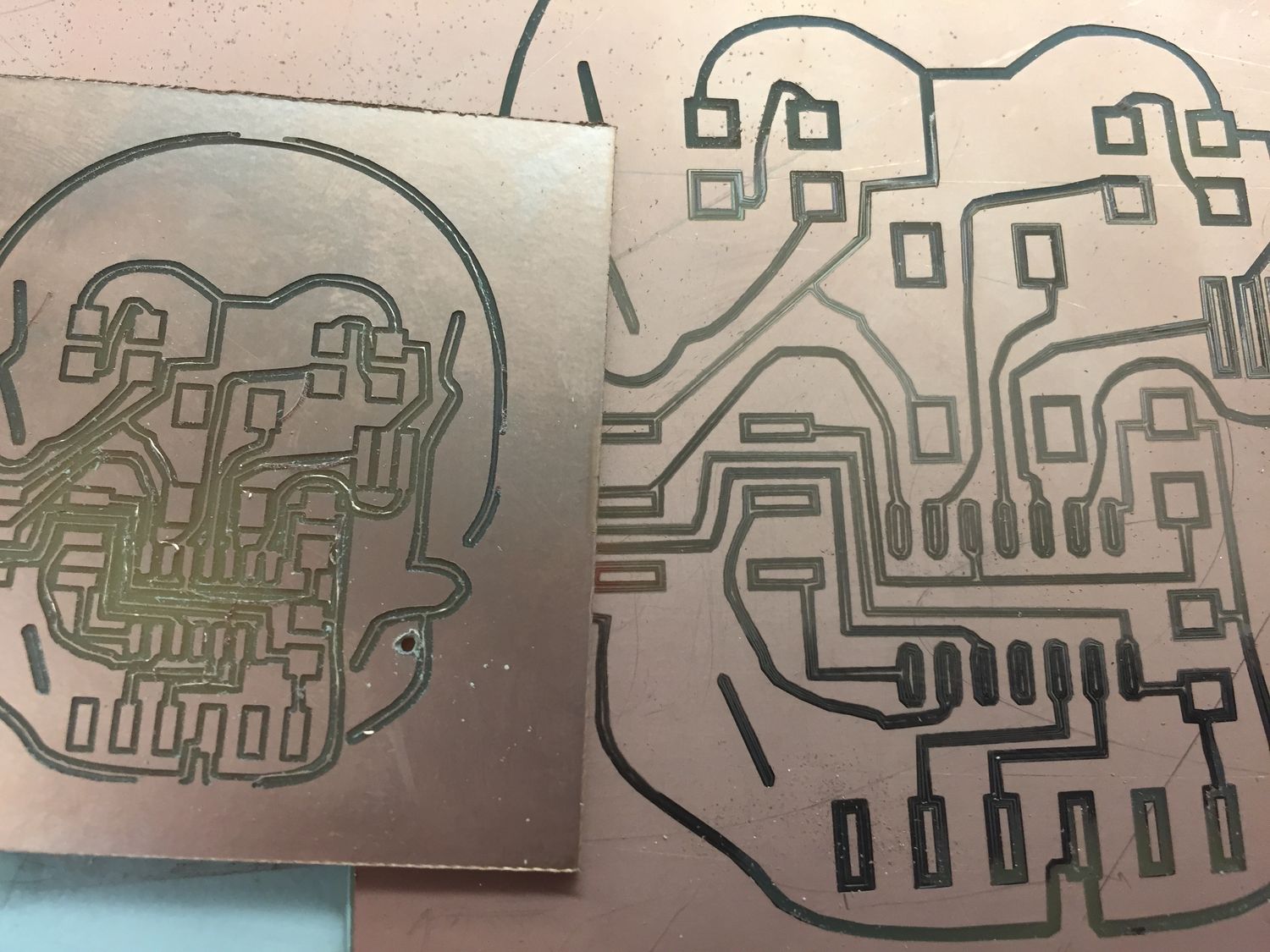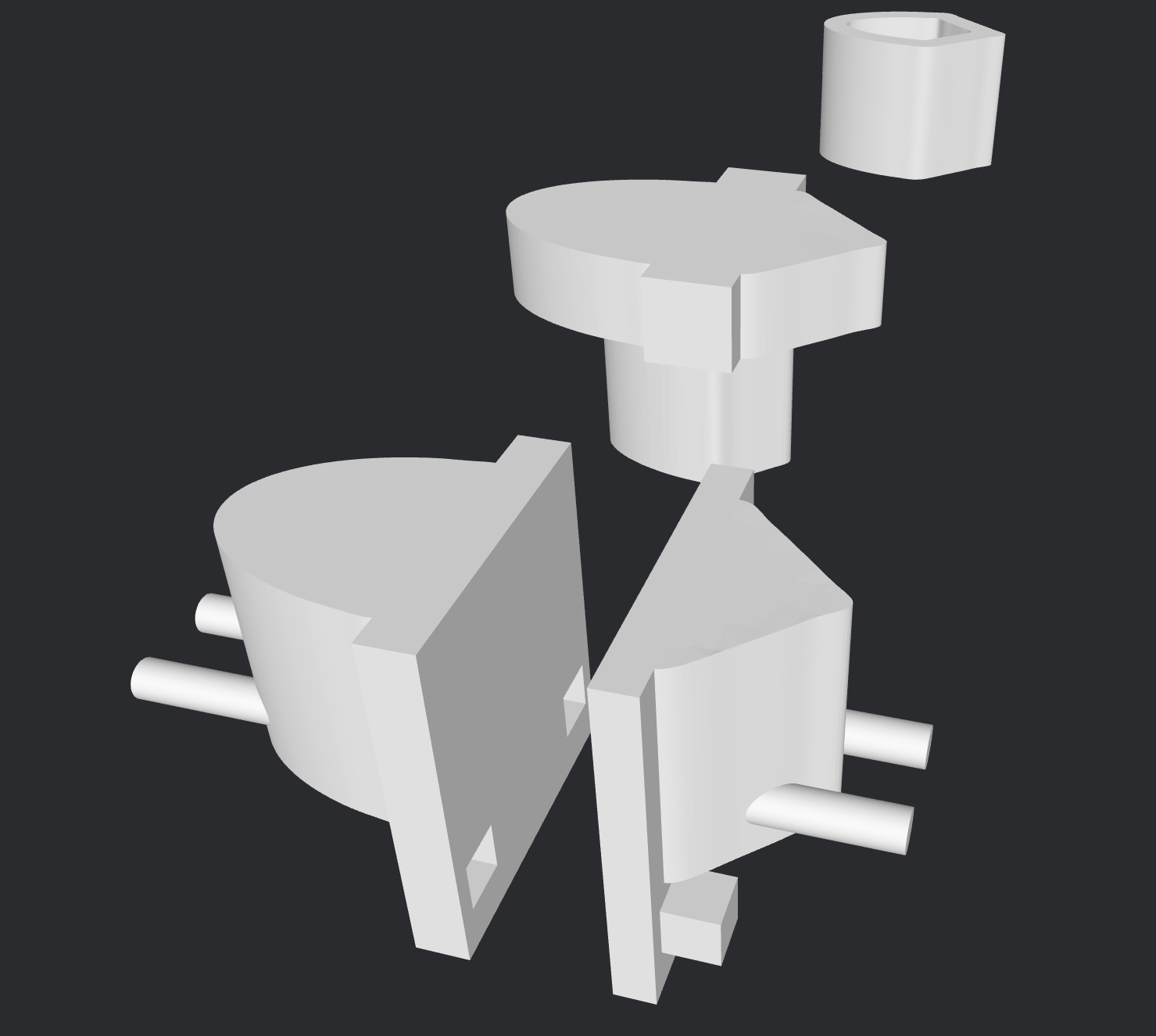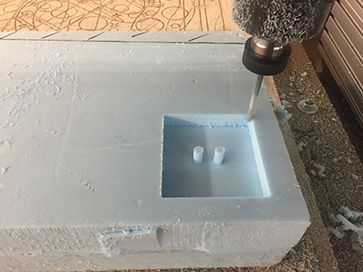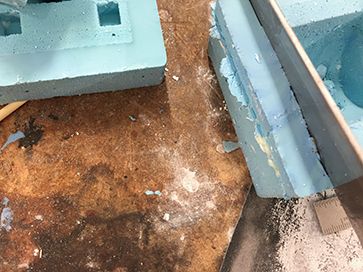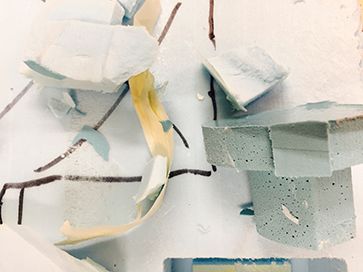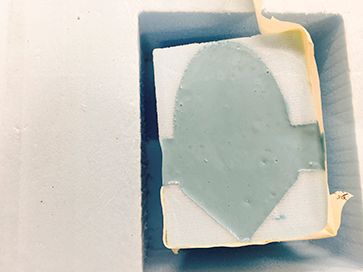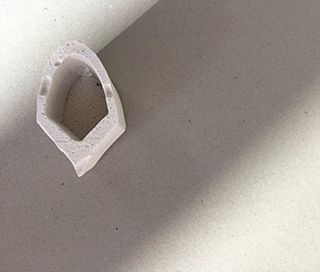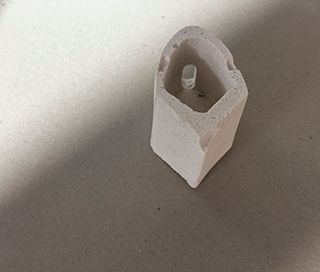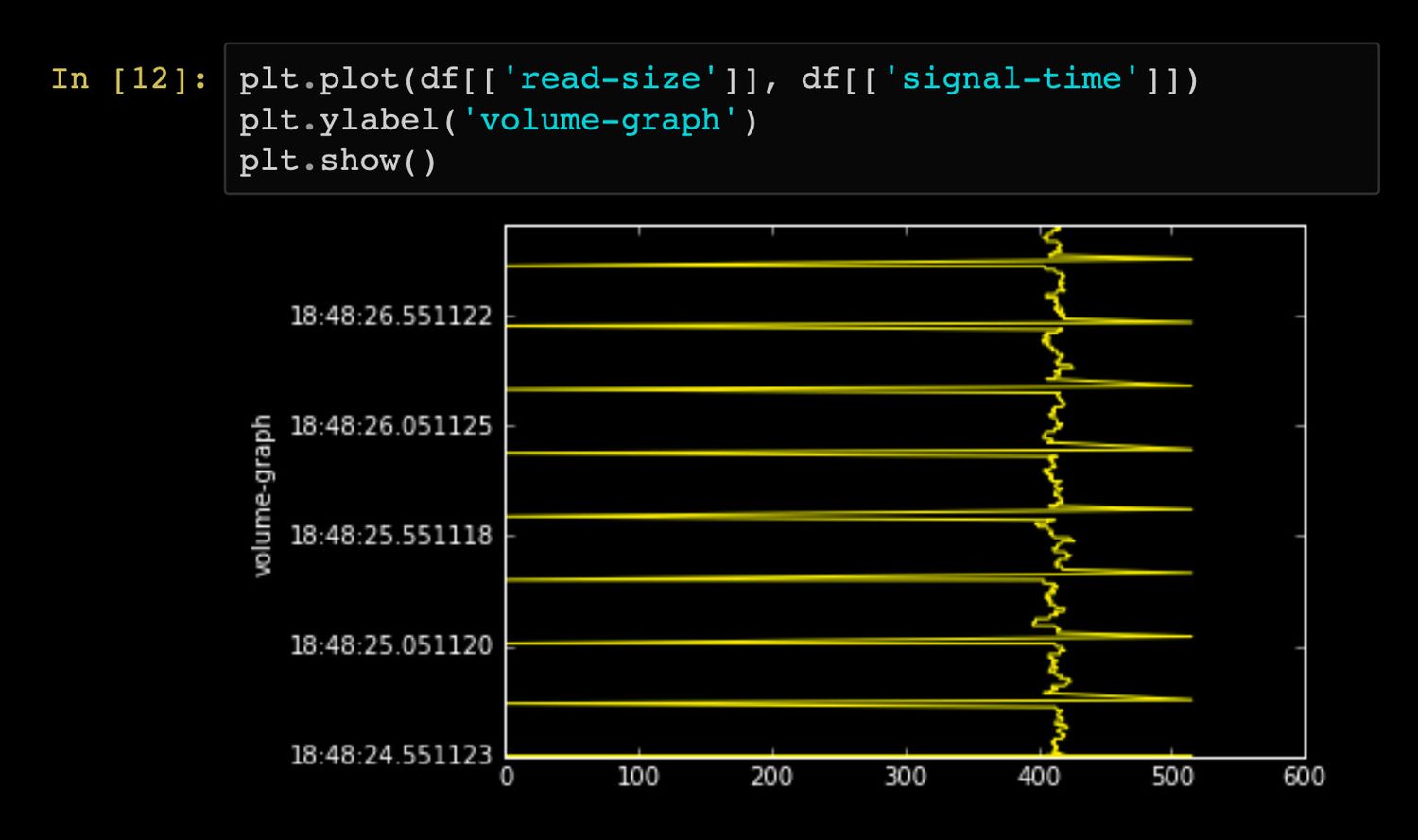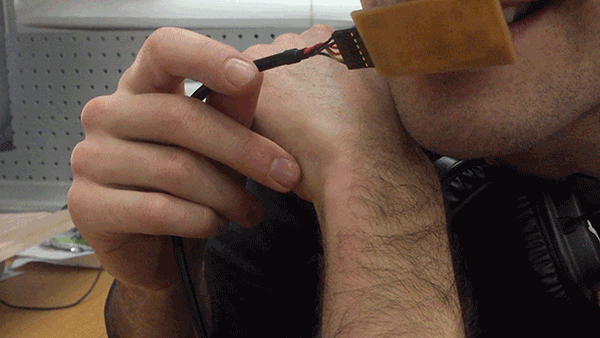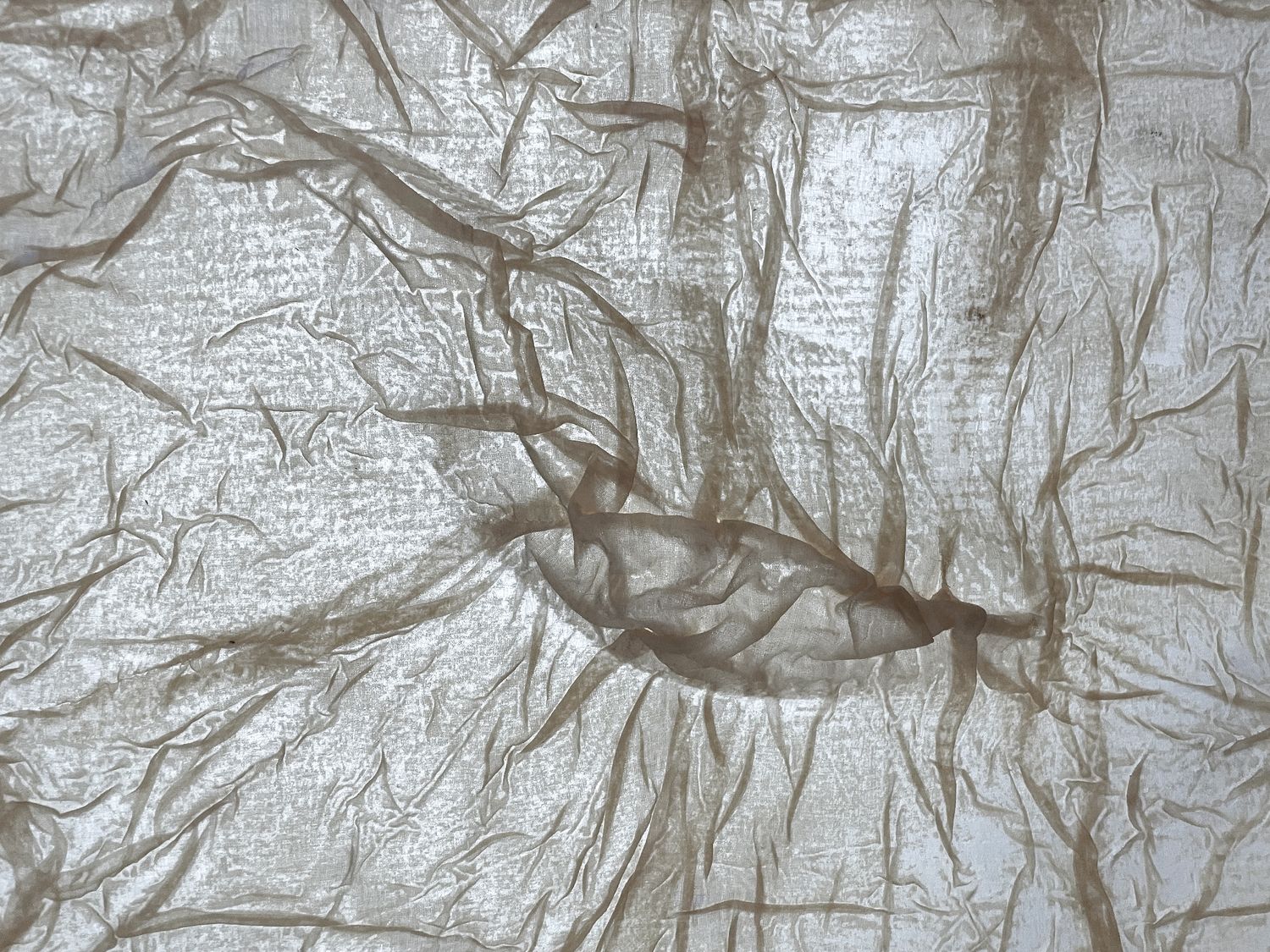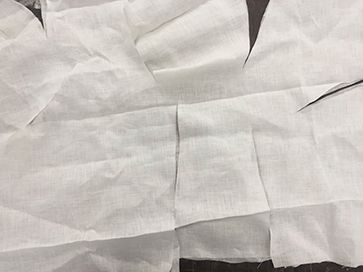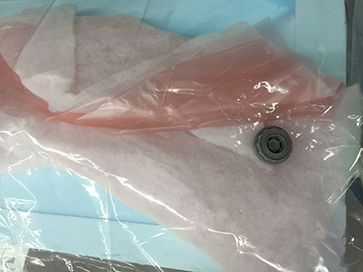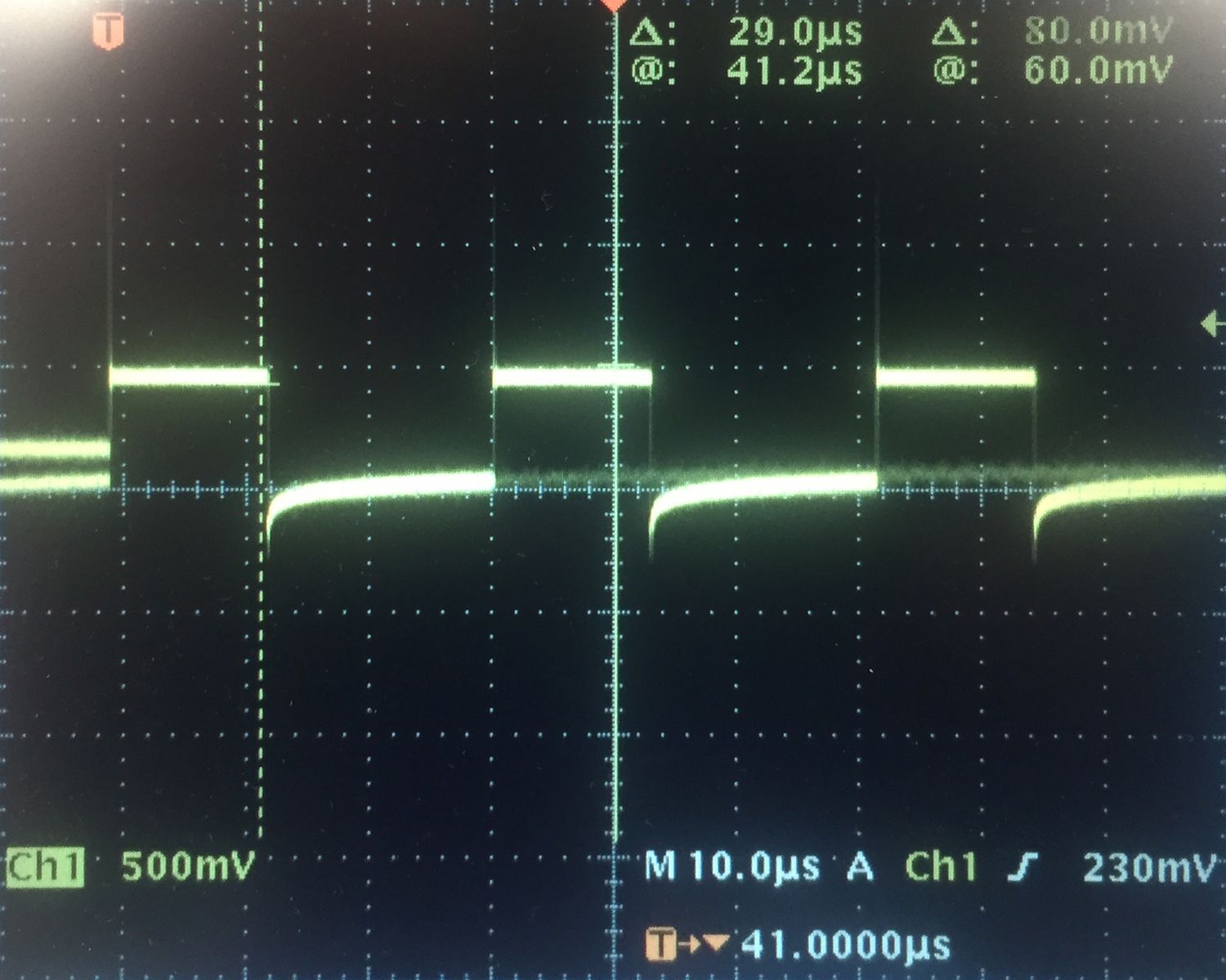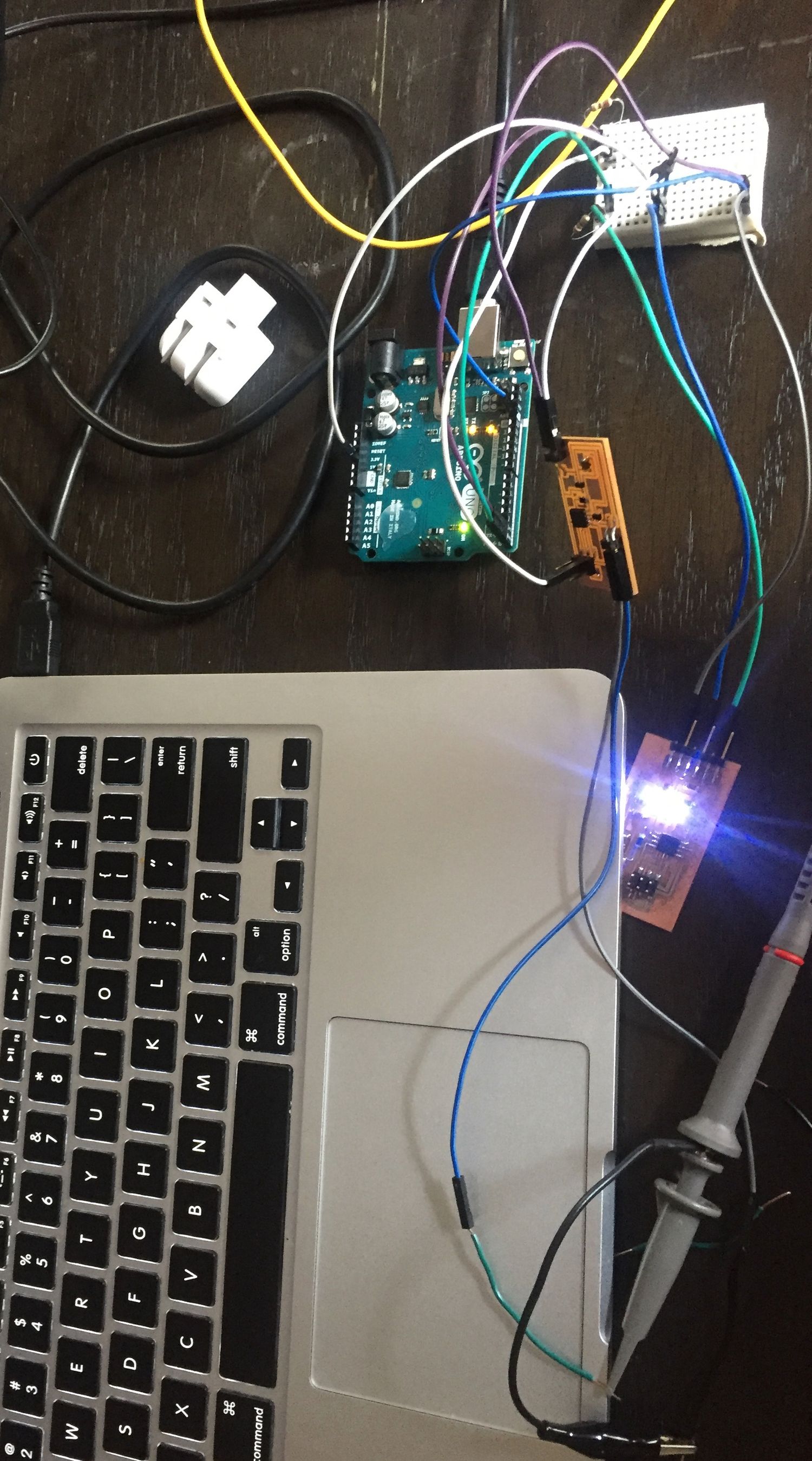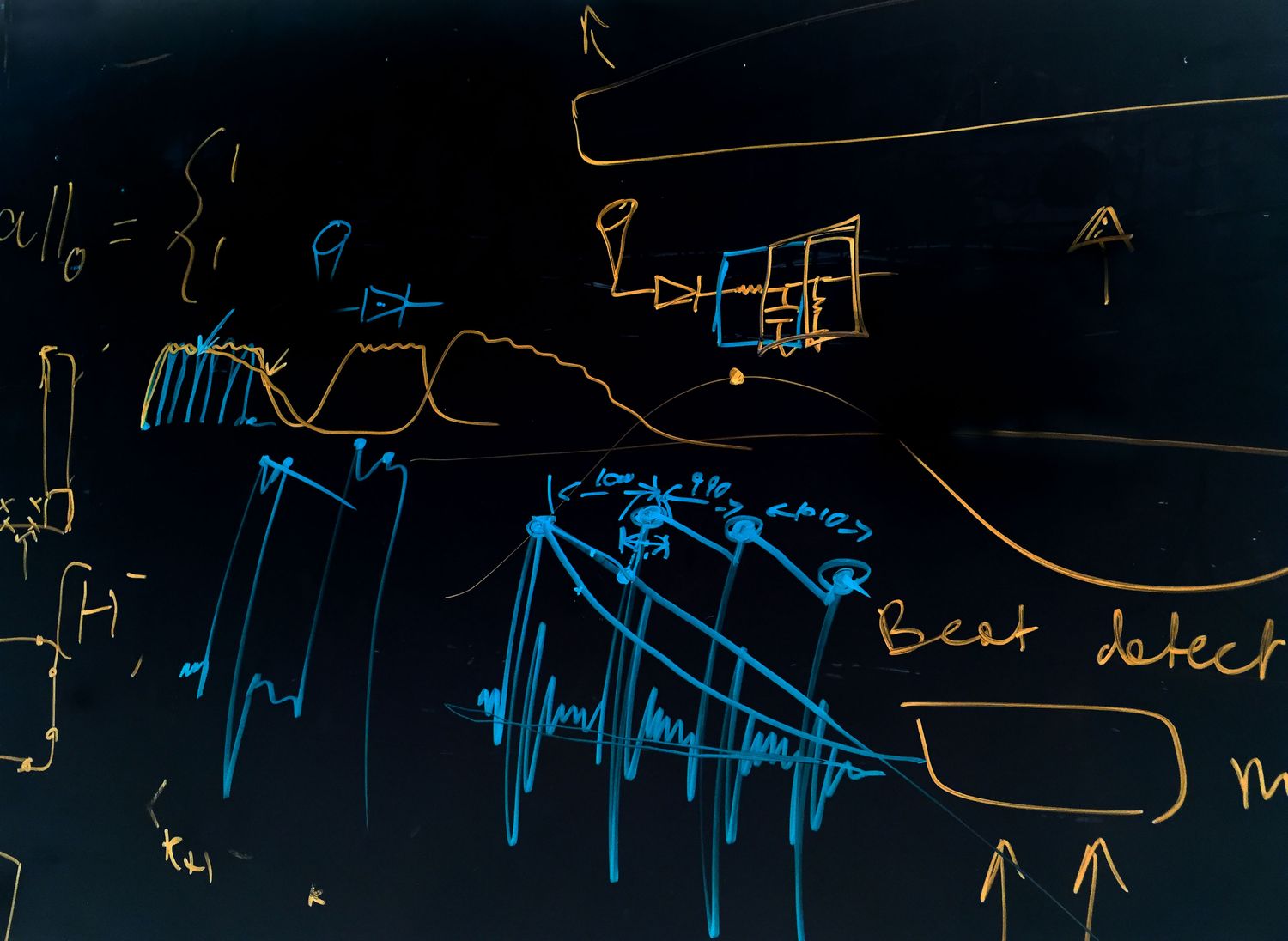Acrylonitrile Butadiene Styrene (ABS)
thermoplastic polymer, is amorphous and doesn't have a true melting point, can be carcinogenic at
higher temperatures (~400 °C)
Alternating Current (AC)
current in which the flow of electrical charge periodically reverses direction
Anode
the opposite of a cathode — positively charged electrode by which electrons leave a device
Antoine Pevsner
1886-1962 a pioneer of twentieth-century sculpture, was known for working with metal and the
first to use a blowtorch, wrote the Realist Manifesto with his brother Naum Gabo
Attack Decay Sustain Release (ADSR)
a common envelope sound synthesis technique that controls the sound properties (namely attack and
decay) at any point in its duration, can be a discrete circuit, module, or implemented in
software. The earliest implementation of ADSR was by Hammond Novachord in 1938.
Autocorrelation
correlation of a signal to itself at various points in time — similarity between observations as
a function of a time lag between them, useful for finding patterns
Auxetics
structures or materials that have a negative Poisson's ratio, thus becoming thicker perpendicular
to the force applied
Bernhard Leitner
known for pioneering the practice of "sound installation" allowing space to emerge from sound
Capacitor
stores electric energy in an electric field between two conductive plates
Catalan surface
spiral-looking surface all of whose planes are parallel to a fixed plane
Cathode
negatively charged electrode by which electrons enter a device. Typically the longer leg of an
LED or the minus side of a battery
Catmull-Clark algorithm
a technique used primarily in computer graphics to create a smooth surface by subdivision
Claude Shannon
"the father of information theory"
Clipper
prevents the output of a circuit from reaching a certain voltage without impacting the remaining
waveform
Continuous Liquid Interface Production (CLIP)
a fast photochemical process using uncured resin, exposure to oxygen, and a light source
Cymatics
from the Greek word "wave" is a term coined by Hans Jenny (1904-1972) to classify a study of
modal vibrational
Differential signal mode
pair of traces between receiver and driver — one carries a negative signal while the other a
positive one. These signals are equal and opposite, so there is no return signal from ground —
what travels along one trace comes back the other. The USB operates in this mode
Dijkstra's Algorithm
conceived in 1956, is an algorithm for finding the shortest path between two nodes — a common
variation includes starting with one node and mapping distances to all of the other nodes, then
selecting the pair of closest nodes
Diode
an electrical device that allows current to move through it in one direction with greater ease
Direct Current (DC)
the opposite of AC, i.e., the flow of electrical charge is in one direction only
Duty cycle
percentage of a period in which a signal is active
Eigenvector
a linear transformation that does not change direction when a separate transformation is applied
to it
Electrical resistance
measures the level of difficulty to pass an electrical current through a conductor, the inverse
quantity is electrical conductance which measures the level of ease
Electrochromism
reversibly changing color by using bursts of change on susceptible materials
Encapsulation
OOP concept bringing together data and functions that manipulate this data — led to advancement
in data hiding
Eutectic system
a mixture of fixed-proportion substances that melts and solidifies at a single temperature that
is lower than the melting points of the separate constituents
Fick's Laws of Diffusion
describes diffusion, the first law was based on the assumption of a steady state in which
particles move from areas of high concentrations to low concentration areas establishing an
equilibrium
Fourier's Law
the law of heat conduction which states heat flows spontaneously from the hotter body to a cooler
body converging toward a thermal equilibrium
Galvanometer systems
based on moving mirror technology, similar to what is used to create laser light shows
Garolite
fiberglass-epoxy laminate (high strength and stable under temperature fluctuations), a cheaper
alternative to carbon fiber
Georges Perec (1936-1982)
was a French novelist, filmmaker, documentalist, and essayist his work is rooted in experimental
word play, lists and attempts at classification
GPIO (General-Purpose Input/Output)
a generic pin whose behavior is controllable by user at run time
Graphine
allotrope of carbon in the form of two dimensional, honey-comb lattice on atomic scale. It is
about 100 times stronger than steel, conducts electricity and is nearly transparent
Iannis Xenakis (1922-2001)
Greek-French composer, music theorist, architect, and engineer who worked with Le Corbusier. He
also pioneered the use of mathematical models in music and influenced in the development of
electronic music
John Frazer
an architect and researcher with who, in his notable work – An Evolutionary Architecture,
emphasized the need for manual creation as a learning method for understanding computers
Kirchhoff's Current Law (KCL)
indicates that at any node in an electrical circuit, the sum of currents flowing into the circuit
and the sum of currents flowing out of the circuit must equal
Kirchhoff's Voltage Law (KVL)
the sum of electrical potential differences (voltage) around any closed network is zero
Linear-Feedback Shift Register (LFSR)
a way of generating pseudo random numbers by producing a sequence that has a linear relationship
to its previous state
Lissajous Curve
describes harmonic motion is a part of a series of curves investigated by Nathaniel Bowditch in
1815, and by Jules Antoine Lissajous in 1857
Marching Cubes
computer-graphics algorithm published in 1987 for extracting polygonal mesh from voxels
Medial Axis
also known as cut locus, is the set of all points having more than one closest point to the
object's boundary
Moore's Law
an observation made in 1965 by Gordon Moore, co-founder of Intel, predicting that the number of
transistors in a dense integrated circuit will double every two years. While Moore's law held
true for several decades, the trend has slowed down as physical limits to transistor scaling has
been reached
Multidrop Bus (MDB)
a bus in which all components are connected to the electrical circuit and an arbitration process
determines which device sends information at any point, while the other devices listen for data
Murray's law
formula of relating the daughter branches to the radii of the parent branch of a lumen-based
system – radius of the parent branch cubed equals to the sum of all the daughter radii cubed.
The same principle has been applied to engineering in the design of minimum mass vascular
networks carrying liquid healing agent to areas of skin damage
Ohm's Law
I = V/R current through a conductor between two points is directly proportional to the voltage
across the two points
Open
the opposite of a short — lack of current between two nodes
Operational Amplifier (Op-Amp)
electronic devices that increase the power of a signal. Op-Amps can be either inverting or
non-inverting
Ouvroir de littérature potentielle (OULIPO)
"workshop of potential literature" was a collection of French writers and mathematicians who
sought to create works using constrained writing techniques (e.g. poetry by algorithm), it was
founded in 1960 with Perec being one of the prominent members
Phase Lock Loop (PLL)
a system that generates an output signal whose position is related to the position of an input
signal by bringing back the output signal for comparison with input signal. Keeping the input
and output phases in lock also keeps the respective frequencies the. PLL can also track an input
frequency or generate a frequency that is a multiple of the input frequency
Photolithography
a process used in microfabrication to pattern parts of a thin film by transferring a geometric
pattern from a photomask to a light-sensitive chemical on the substrate
Polylactic Acid (PLA)
biodegradable polyester typically made from corn starch, tapioca roots, or sugarcane. PLA has one
of the highest bioplastic consumption volumes in the world. It is a common 3D printing filament.
PLA is compostable
Potentiometer
three-pronged resistor with an adjustable voltage divider
PSOC (Programmable System-On-Chip)
family of microcontroller intergraded circuits — good for analog requirements
Pull-up/pull-down resistors
used to prevent floating by ensuring that the MCU input pin is either in high (pulled to VCC) or
low state (pulled to Ground). Pull-up resistor is more common of the two — it is frequently
connected to high voltage (often allocated to VCC) and pull-down is often connected to ground
Pulse-Width Modulation (PWM)
encodes a message into a pulsating signal, its main use is to control the power supplied to
things like motors
Resonator
creates an external clock signal for the microcontroller
Schwarz–Christoffel Mapping
conformal transformation of the upper half-plane onto the interior of a polygon
Serial Peripheral Interface (SPI)
synchronously sends data between microcontroller and the nodes (e.g. sensor, SD card) components
by separating the clock and data lines
Short
happens when current travels down an unintended path between two nodes intended to be at
different voltages. The most common short is when VCC and ground are connected
Stereolithography
uses a laser beam to 3D print layer by layer from a liquid polymer that hardens on contact, this
generally results in a higher quality print. Common SLA printer manufacturers are Formlabs and
Stratasys
Theory of self-reproducing automata
book by John von Neumann demonstrating the logical requirement for machine self-replication. His
machine, the Universal Constructor, was designed in the 1940s without a computer
Trigger
a circuit that controls another circuit, converts inputs into outputs. The output remains
constant until the input is sufficiently altered
Vocoder
originally developed in 1930's, vocoder is a category of speech processing that analyzes and
synthesizes the human voice signal for audio data compression, voice encryption, etc. in order
to reduce bandwidth
